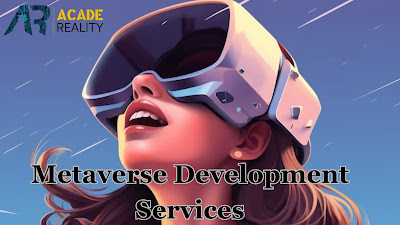Step Inside Your Dream Home: Virtual Reality in Real Estate
The real estate sector is no stranger to innovation, continually adapting to new trends and technologies. Recently, one revolutionary technology has been making influences in the industry: VR (virtual reality).
Visualize being able to walk through a possible dream home, exploring every opening door corner, and peering out the windows, all minus ever setting foot inside the actual property. VR services in Real Estate have transformed the way we interact and experience real estate, proposing a sight into the future of asset tours.
By leveraging advanced technology, homeowners and designers alike are stepping into a new era of visualization and creativity, where the boundaries between reality and imagination are blurred.
Enhancing Convenience and Accessibility
Enhancing convenience and accessibility for virtual reality real estate references to the efforts made to make property tours more user-friendly, immersive, and inclusive using VR services in Architecture & Real Estate.
By leveraging VR technology, potential renters and buyers can explore properties distantly, enhancing the overall property viewing experience and eliminating the need for physical visits.
This approach signifies the future of asset tours, as it offers several benefits and advantages.
Remote Accessibility: Virtual Reality real estate lets users visit properties from a place in the world virtually. Potential renters or buyers can explore a property's features, design, and layout without having to be present.
This convenience is mainly valuable for people who are unable to visit properties due to time constraints, live in remote areas, or may have mobility limitations.
Immersive Experience: VR services in Real Estate offer a highly immersive experience by faking a three-dimensional environment. Consumers can examine rooms, navigate through virtual spaces, and get a sense of the property's layout and scale.
They can experience a realistic representation of the property, turn their heads to look around, and virtually walk through rooms. This immersive experience helps possible renters or buyers form a more precise perception of the property before making choices.
Cost and Time Efficiency: Virtual Reality real estate tours reduce costs and save time for both sellers and buyers. Purchasers can explore several properties within a short period without having to travel to every location materially.
On the vendor's side, digital tours can reduce the number of physical tours needed and remove the need for staging properties for each show. This proficiency benefits all parties involved by restructuring the property search procedure.
Interactivity and Customization: VR technology allows for interactivity and customization, enhancing the consumer experience.
Customers can tailor their digital tours by selecting diverse color schemes, furniture arrangements, or finishes to picture their preferences. Moreover, collaborative features can be combined, such as clickable objects that offer thorough information about particular amenities or areas within the property. This interactivity empowers users to make informed decisions and actively engage with the digital environment.
Showcasing off-plan properties: Before the building of a property is complete, it can be perplexing for potential buyers to imagine the final product. Virtual reality real estate allows designers to create practical walkthroughs of yet-to-be-built properties, offering buyers an immersive and realistic representation of the future space.
Better Visualization: VR provides the ability to showcase properties that are in the planning stage or are still under construction.
As VR services in Architecture & Real Estate continue to advance, the prospect of property tours lies in the smooth integration of VR to enhance convenience, accessibility, and overall user experience.
These developments provide transformative advantages to the real estate industry, empowering renters and buyers to make well-informed decisions and allowing for more effective property transactions without time constraints or limitations of physical distance.
Increasing sales and engagement: Virtual reality asset tours are more appealing than standard methods, capturing the interest and attention of prospective buyers.
The collaborative nature of VR reassures viewers to spend more time discovering the property, increasing the likelihood of them forming a desire to make a purchase and developing an emotional connection. Studies have shown that possessions showcased through VR are more likely to generate higher conversion rates and receive inquiries, leading to better sales for real estate experts.
Wrapping up
As technology continues to advance, the perspective of virtual reality real estate design is infinite. Imagine experiencing how natural light changes throughout the day, experimenting with furniture layouts, and exploring different lighting scenarios—all within the virtual realm.
Virtual reality real estate has the power to redesign the way we approach design, making it more accessible, interactive, and engaging for both homeowners and professionals.
In conclusion, VR is more than just a means; it's a reformative experience that redefines the way we bring and envision our interior spaces to life. It bridges the gap between reality and creativity, offering an unprecedented level of precision, collaboration, and immersion.
AcadeReality provides a range of solutions from VFX, gaming, 2D & 3D animation, Metaverse & NFT, and AR & VR solutions.




Comments
Post a Comment